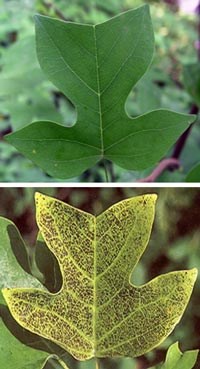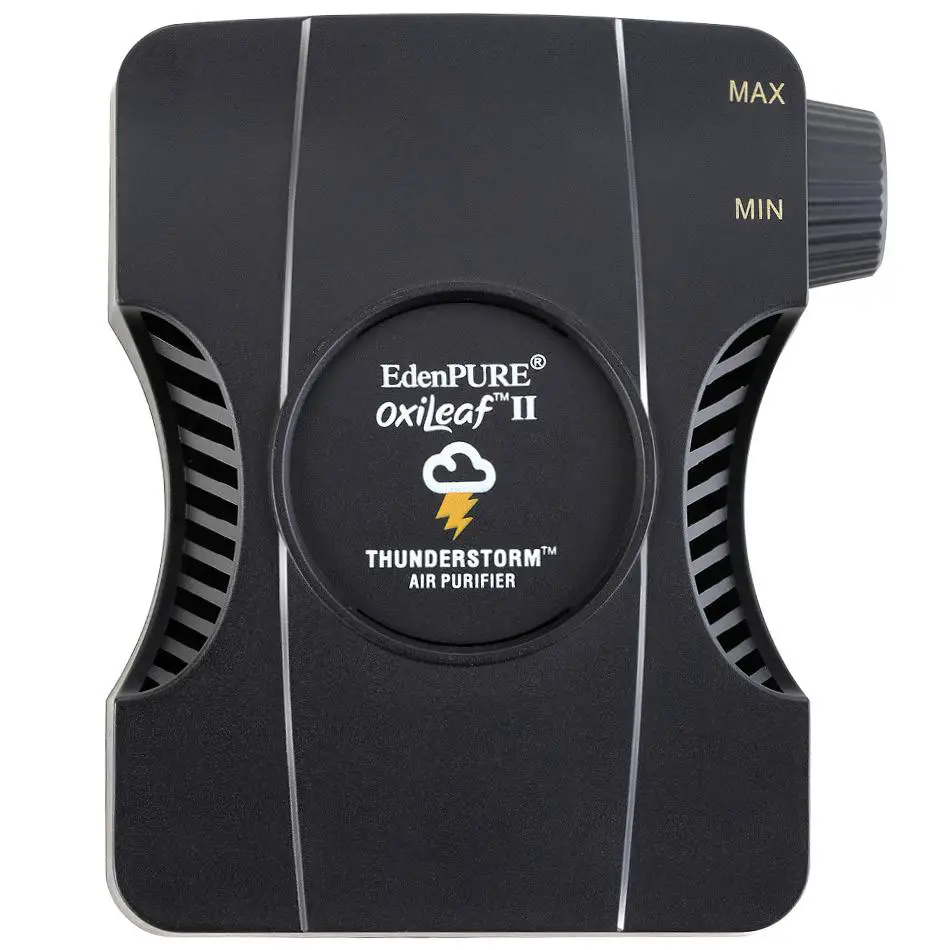Air purifiers and many different plants are two good ways of increasing indoor air quality and freshening up the air. The interaction between air purifiers and plants is an interesting aspect that I want to explore in this post – more specifically whether or not air purifiers help plants grow. This is quite a common question that does have a quite specific answer. If you have many plants in your home, you probably want them to grow and thrive. So, do air purifiers help plants grow?
In short, yes – air purifiers do help plants grow, as they remove air pollutants from the air which can otherwise limit the amount of food a plant can make through the process of photosynthesis. Not all air purifier types help plants grow, some can actually harm them. Ozone generators and other types of air purifiers that release ozone are not helpful for plant growth. On the contrary, they are actually quite bad for plants. This is because of negative ozone properties, which have adverse effects on all living things, plants included.
Therefore, it is really important to be mindful of what kind of air purifier we choose. After all, we do want our plants to prosper and not suffer. Feel free to read further for a more in-depth version of this answer.
How do air purifiers help plants grow?
As you already know, air purifiers clean the air by removing various air pollutants and harmful particles from the air. While all air purifiers have the same end goal, we do have different types of air purifiers. The main difference between them is the technology they use to clean the air. Different types of air purifiers remove different types of air pollutants. As we will see, this is a piece of important information regarding plant growth.
There are quite a few factors that dictate the growth of plants – clean air is an important one. To understand why we first need to take a look at photosynthesis. Photosynthesis is basically a chemical process that plants use to convert sunlight into food. Carbon dioxide is a necessary component for photosynthesis and is a crucial food factor for plants.
Polluted air consists of different harmful particles such as dust, pollen, bacteria, viruses, VOCs (volatile organic compounds), odors, pet dander, allergens, etc. The most harmful air pollutants for plants are smoke, gases, and other volatile organic compounds, as they limit the amount of carbon dioxide plants can intake. The less carbon dioxide plants can intake, the less food they can make through the process of photosynthesis, slowing their growth.
So when air purifiers remove these air pollutants from the air, they directly enable plants to absorb more carbon dioxide. Consequently, more food can be made through the process of photosynthesis and this equals faster plant growth.
Ozone – The enemy of plants and humans
Ozone, more specifically ground-level ozone is one of the most common and damaging air pollutants for plants. Without going into too much detail, ozone basically enters the leaf and damages the tissue, reducing its survival chance. This is a widespread issue for all plants and trees alike. When a leaf is invaded by ozone, physical and visible changes occur on the leaf. In the picture below you can see what a healthy leaf looks like (top) in comparison to the same leaf exposed to ozone (bottom photo).

Source: nps.gov
Ozone also negatively affects humans, especially anyone that already suffers from respiratory issues like allergies and asthma. Again, we are talking about ground-level ozone here. This is why it is equally as important for people as is for plants to limit their exposure to ozone.
I mentioned ozone separately for a very specific reason – some types of air purifiers actually produce this ground-level ozone. This makes them very dangerous to use in closed spaces such as homes, both for plants and people alike. You must also be wondering are air purifiers bad for plants. In the next section, we are going to take a look at the different types of air purifiers and which ones are (not) harmful to plants.
Which types of air purifiers help plants grow?
Continuing from my previous section, some air purifier types help plants grow, while others actually damage them. There are many different air purifiers on the market, which are mainly differentiated by the air cleaning technology they use to purify the air. The most common types of air cleaning technologies are HEPA filtration (uses HEPA filters), activated carbon filters, negative ion generators, UV light, and ozone generators (also called ozonators).
Some of the above-mentioned air purifier types never produce ozone, some always produce ozone, and a few produce ozone only sometimes.
- AIr purifier technologies that never produce ozone: HEPA filtration (HEPA filters), Activated Carbon filters, pre-filters.
- Air purifier technologies that sometimes produce ozone: air ionizers (also called negative ion generators or ionic air purifiers), UV-C light.
- Air purifier technologies that always produce ozone: ozone generators (ozonators).
Luckily for us, the most common and popular group of air purifiers use HEPA filters and carbon-activated filters. Since these do not produce any ozone, they do not harm plants in any way. HEPA filters and carbon activated filters also clean the air very effectively, removing the vast majority of indoor air pollutants. Consequently, air purifiers that use HEPA and activated carbon technology directly help plants grow. Here is a quick graphic summary of different types of air-purifying devices/technologies and ozone production:
Air purifier type | PRODUCES OZONE | DOES NOT PRODUCE OZONE |
HEPA Technology | ||
Carbon Activated Technology | ||
Air ionizer |
| |
UV light Technology | ||
Ozone generator |
Types of air purifiers that are bad for plants
So far we have looked at different air purifiers and found out that certain types can be beneficial for plants and their growth. But does the opposite also hold true – are some air purifiers bad for plants? They can be if they produce ozone. Referring back to our graph above: air ionizers works, UV-C light purifiers, and ozone generators have the potential to be bad for plants and even kill them.
Air ionizers and UV-C light air purifiers are the next most common air purifier type after HEPA filters. They can come as a standalone device or part of a larger filtration system. You should always look for information regarding ozone emission, as some of these devices produce ozone, while others do not. Air ionizers can help plants grow the most, but only if they do not produce any ozone. So if an air ionizer or UV light purifier does not produce ozone, they are helpful for plants. If they do produce ozone, they are bad for plants.
Ozone generators (ozonators) clean the air by releasing huge amounts of ozone into the air. There is really no way to avoid ozone using these kinds of devices. Stay away from ozone generators if you are worried about your plants. They produce an (unavoidable) large amount of ozone by default, which not only stops the growth of plants but can also kill them.
Also, always pay extra attention to filtration systems that combine some of these air purifying technologies. Always read the product description about any possible ozone emission. While a small amount of ozone is not deadly to plants, it can definitely stun plant growth.
If this topic interests you more in detail – I wrote a separate post about the reason why air purifiers produce ozone here.
Do Air Purifiers Help Plants Grow – Conclusion
To summarize, air purifiers help plants grow by removing air pollutants and increasing indoor air quality. Clean air enables plants to absorb more carbon dioxide, speeding up their growth through photosynthesis. Ground-level ozone is a natural enemy of plants, causing them damage and slowing down growth. If ozone concentration is high enough, plants can even die off.
Some air purifiers produce ozone as a byproduct, which is harmful to plants and humans. Ideally, you want to select an air purifier type that has good air cleaning abilities, while not producing any ozone at the same time. This combination of good air cleaning technology + no ozone will make sure that your plants grow faster than they would otherwise. Air purifiers that use ozone are bad for plants, which is especially the case for ozone generators. Stay away from them unless you know exactly what you are doing.
Air purifiers that use HEPA and carbon filters are the most reliable and affordable way of achieving improved air quality, and ozone-free. If you are new to the air purifying world, I have prepared a separate top 5 best air purifier under the $50 list to get you started. All air purifiers on this list are very affordable and very effective at cleaning the air, consequently helping plants grow.
A good air purifier will always be a great addition to any home, keeping your air clean and your plants safe & growing!
Frequently Asked Questions
do air purifiers remove dust?
Yes, they do remove dusk and help us to reduce the symptoms of asthma and allergy.
do air purifiers increase oxygen?
No, Air purifiers do not produce or increase oxygen levels.
do air purifiers help with allergies?
Yes, Air purifiers help with the major allergy-aggravating particles and remove the particles larger than 0.3 microns


